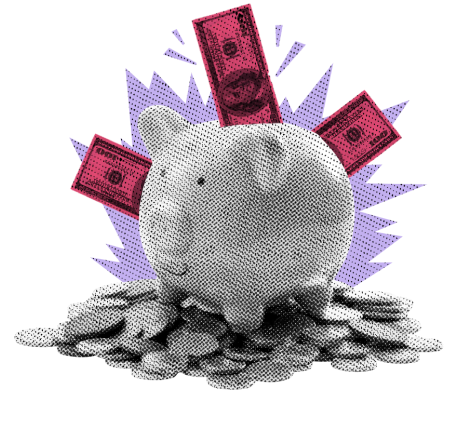
The Fed loves economic lingo like “transitory” and “soft”—but it’s all just code for delay. Here’s why.
KEY TAKEAWAYS
- Hard data tells us what already happened—not what’s coming
- Soft data like confidence and PMIs tries to forecast the future
- Investing is about the future, so soft data has value despite its flaws
- Powell uses adjectives like “soft” and “transitory” to buy time on policy
- Combining hard and soft data gives a fuller picture, even if imperfect
MY HOT TAKES
- Powell strategically uses economic jargon as a policy stall
- Hard data is overhyped for forward-looking investing
- Soft data, while subjective, may offer critical signals
- Investors should never rely solely on past indicators
- Economic forecasting is hard—for policymakers too
- You can quote me: “Most of the hard data is useless because it tells you what the temperature was last week, which doesn’t really help you to know what the temperature may be next week.”
Feelings. The great debate continues. Specifically, the debate about soft versus hard economic numbers. The nomenclature always existed in the nerd-circles that I travel in, but it took nerd-superstar Jerome Powell to bring it out of the shadows. Why would Powell do such a thing given that he can only fit so many cards up his sleeve.
Let’s take a step back and define what these nerd-adjectives even mean. We can start with the easier one: hard numbers. Hard numbers are economic releases that represent real economic activity, tallies if you like. How many of this or that was bought or sold at what price, and so on.. Good examples of hard numbers are GDP–the mother of all hard numbers, Unemployment Rate, Consumer Price Index, Baker Hughes Rig Count, USDA Winter Wheat Progress, etc. Someone is out there counting, tallying, slicing, and dicing data so that we can get a handle on what is–or was going on in the economy at the time of the count. There was a bit of foreshadowing in the past sentence, which I am sure that you picked up on.
What are you thinking about as you read this newsletter every morning (you read it every day, right 😉)? You are thinking about your investment portfolio, or course. You want to know which of your stocks is destined for great success or… well, you know. A stock's price, theoretically at least, factors in all the company’s future cash flows for as long as we can predict them along with a culmination of all the cash flows beyond our model period, in perpetuity. Perpetuity, as in, forever. Wow, that’s a long time hence, isn’t it? Anyway, the most important takeaway is the word “future.” We don’t buy a stock because it did well last year, we buy it because we think it has superlative prospects for the future. Obviously that stock’s future success will be based on the economic conditions in the future. It’s fair to assume that a company engaged in the sales of things would sell less of them during an economic crisis, or during a period of hyperinflation.
How can we then draw a bead on future economic conditions? Well, the government as well as a few hard-working private companies, meticulously track economic conditions and share them with us on a regular basis. Take GDP for example. It is the ultimate measure of US Economic health. The problem is that number, which is released and revised several times throughout each quarter only tells us how the economy performed LAST quarter. As in the one that ended in March. How many cars will Ford sell next year? Will Target get its chance to recover from its dismal performance? Will Tesla get its mojo back? How many houses will DR Horton build next year? That is what you want to know, but GDP, a hard number, won’t help you one bit in answering that question. Neither will new Nonfarm Payrolls, CPI, Durable Goods Orders, or any of those really popular hard numbers, because they all tell us how things were at some point in the past.
To be clear, there is some value to looking back at hard numbers. Primarily to observe trends. Are things trending up or down? Down is good for CPI but not so much for GDP. Of course, there are no guarantees that trends will continue, especially on Wall Street, but at least it’s something. We can also use these backward-looking numbers to observe how markets behaved in their wake… in the past. Did Consumer Discretionary stocks fall in the quarter after the last time the Unemployment rate got over 5%? That is a valid use of hard economic numbers with a caveat, of course; the standard Wall Street disclaimer applies: past performance is not indicative of future results, blah, blah, blah.
So, all these hard numbers are useful, and you must follow them closely, however, you need to know that facts increase the probability of making the right decisions. I hope that you are searching through your mental catalog to figure out if there are any economic releases that may help you predict future economic conditions? Well, there are. Things like consumer confidence and purchasing managers indexes (PMIs) are two popular economic releases that attempt to predict economic conditions. They are both based on polling data. Confidence/sentiment polls ask consumers how they feel and what their purchase plans are? While they are at it, they query on where respondents think inflation might be in the future. Good things to know. Are they optimistic? Are they expecting runaway inflation? Are they planning to make a big purchase?
PMIs work similarly but ask business-specific questions about inventories, customer orders, importing, investment plans, hiring plans etc. Also, all good things to know. If consumers and purchasing managers are feeling good, it is reasonable to assume that future economic conditions are more likely to be good than sour. Because they involve “feelings” which can be influenced and possibly inaccurate based on politics, many choose to discount these indicators as less influential. The data is “soft” because it does not involve anything real.
So, most of the hard data is useless because it tells you what the temperature was last week, which doesn’t really help you to know what the temperature may be next week. Soft data may reflect a person's political bias if their candidate is not in the White House, not necessarily actually predicting future economic conditions. Bringing these two types of numbers together by looking at how hard numbers responded to changes in the soft numbers that preceded them in the past, we find some interesting results. In the past 10 years, soft numbers have proven to be a weak predictor of changes in economic numbers. But that doesn’t mean the numbers should be ignored. You could drive an 18-wheeler with one hand on the wheel, but I am sure that you would agree that you’d be better off using both hands.
So, bridging this all into what in the world is happening today. Yesterday, we got ISM Manufacturing. One that Chariman Powell would refer to as being soft, and it showed some signs that purchasing managers were pulling back and predicting future weakness. Getting back to why Powell chose to out the nerd-secret “soft” descriptor to the press. Well, probably for the same reason he outed the word “transitory,” another nerd favorite. The Chairman used it to buy more time in deciding whether or not to raise rates to combat rising inflation. In this case, the term “soft” was used to denigrate data that might suggest an economic slowdown ahead, thus buying more time to lower interest rates. You see, predicting the future is not easy for us investors, nor is it easy for policy makers.
At some point Mr. Powell and his gang of buttoned-up, pinstriped bankers are going to have to stop hiding behind arcane economic adjectives, make a decision, and act. The last time the Fed employed one of those words, it didn’t turn out too well. Predicting the future is hard. We should know. As investors, we do it every day.
YESTERDAY’S MARKETS
Stocks closed in the green yesterday despite early-morning news that China pointed a finger at the US elevating the trade spat. Stock traders elected to take it in stride which is becoming a more common theme of recent. Manufacturing slowed once again according to the Institute for Supply Management’s popular PMI. Bitcoin closed down for a fourth straight day, still just below all-time high, high, highs.

NEXT UP
- Factory Orders (April) are expected to have slipped by -3.2% after climbing by a revised 3.4% in March.
- Durable Goods Orders (April) probably slipped by -6.3% in line with earlier estimates.
- JOLTS Job Openings (April) may have fallen to 7.1 million from 7.279 million vacancies.
- Fed speakers today: Goolsbee, Cook, and Logan.
- Important earnings today: Ollie’s Bargain Outlet, Dollar General, Guidewire Software, and Crowdstrike.
.png)

